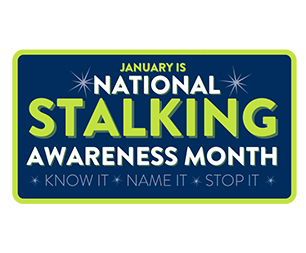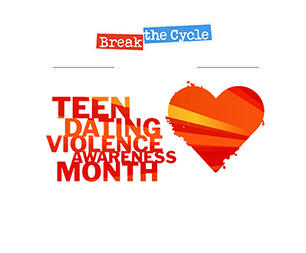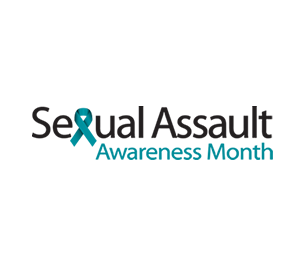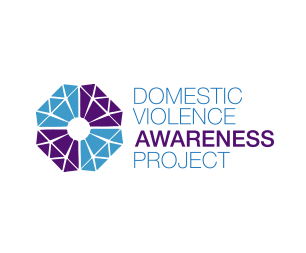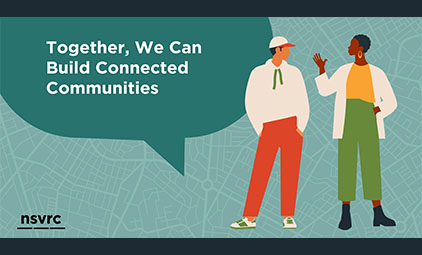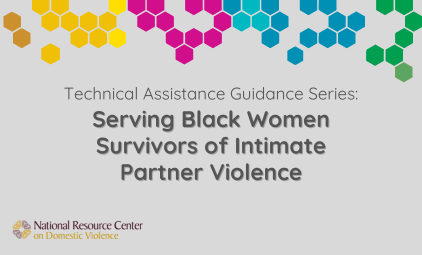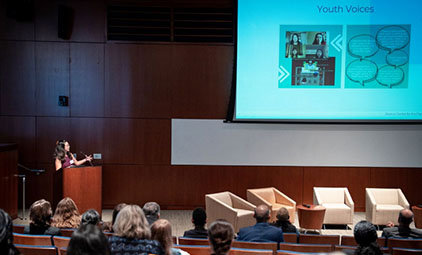![]() FOCUS ON NATIONAL SEXUAL ASSAULT AWARENESS MONTH
FOCUS ON NATIONAL SEXUAL ASSAULT AWARENESS MONTH
Join the conversation: Connect. Respect. Prevent Sexual Violence.
 The 2012 Sexual Assault Awareness Month (SAAM) campaign promotes positive expressions of sexuality and healthy behaviors. Using new tools and resources, advocates and preventionists can address some of the root causes of sexual violence. The focus is on building a healthy future, not just ending sexual violence. We strive for relationships that are consensual, respectful and informed. By starting the conversation, this dialogue can incorporate new partners and strategies to prevent sexual violence. This April, it’s time to talk about healthy sexuality. This year’s day of action is Tuesday, April 3. Join us in taking a stand by starting the conversation on Twitter (#Tweetaboutit).
The 2012 Sexual Assault Awareness Month (SAAM) campaign promotes positive expressions of sexuality and healthy behaviors. Using new tools and resources, advocates and preventionists can address some of the root causes of sexual violence. The focus is on building a healthy future, not just ending sexual violence. We strive for relationships that are consensual, respectful and informed. By starting the conversation, this dialogue can incorporate new partners and strategies to prevent sexual violence. This April, it’s time to talk about healthy sexuality. This year’s day of action is Tuesday, April 3. Join us in taking a stand by starting the conversation on Twitter (#Tweetaboutit).
To learn more about SAAM, new resources, and the current campaign visit: www.nsvrc.org/saam/.
April is also National Child Abuse Prevention Month. In time to promote the goals of both SAAM and NCAPM,  The National Coalition to Prevent Child Sexual Exploitation has just released their updated The National Plan to Prevent the Sexual Exploitation of Children (March 2012). The purpose of this plan is to help assure all children have childhoods free from sexual abuse and exploitation in both physical and digital environments and have opportunities to develop into healthy adults capable of having healthy relationships.
The National Coalition to Prevent Child Sexual Exploitation has just released their updated The National Plan to Prevent the Sexual Exploitation of Children (March 2012). The purpose of this plan is to help assure all children have childhoods free from sexual abuse and exploitation in both physical and digital environments and have opportunities to develop into healthy adults capable of having healthy relationships.
TA QUESTIONS OF THE MONTH
Read and comment on these recent requests received by the National Sexual Violence Resource Center and National Resource Center on Domestic Violence!
April 2012: How can I talk about healthy sexuality to prevent sexual violence?
The ongoing process of active and informed consent is a key part of healthy sexuality and safe sexual relationships. Educating communities about consent and providing models for negotiating consent in relationships can enrich our lives in many areas.
PTSD and TBI are not new issues to domestic violence advocates, especially as these relate to victims and survivors, who are at great risk for psychological trauma and head injuries. What has been emerging is an increased understanding of the implications to the domestic violence field of PTSD and TBI among veterans who return home to their partners and families.
NEW APPLIED RESEARCH PAPERS
Addressing Domestic Violence in Immigrant Communities: Critical Issues for Culturally Competent Services by Sheetal Rana in consultation with Leni Marin (February 2012)
This Applied Research paper provides an overview of the methodological issues in research used to generate knowledge of the nature and dynamics of domestic violence in immigrant communities, the research findings that help us understand the broad contexts within which immigrant women experience domestic violence, and provides some considerations for culturally competent services.
Groupwork with Men Who Batter: What the Research Literature Indicates by Jeffrey L. Edleson (February 2012)
This Applied Research paper provides a brief overview of the history and current practice of groupwork with men who batter, and then focuses on key findings from the published research on batterer group programs.
NEW RESEARCH STUDY ON NON-RESIDENTIAL DOMESTIC VIOLENCE SERVICES & SUPPORTS
The National Resource Center on Domestic Violence and the University of Connecticut School of Social Work reports new data that documents how well local domestic violence programs are addressing the needs of those reaching out to them for assistance.  This substantial data collection effort involved 90 urban, rural and suburban community-based domestic violence programs and nearly 1,500 domestic violence survivors surveyed in 2010 about their experiences seeking and receiving non-residential domestic violence services.
This substantial data collection effort involved 90 urban, rural and suburban community-based domestic violence programs and nearly 1,500 domestic violence survivors surveyed in 2010 about their experiences seeking and receiving non-residential domestic violence services.
This study complements the Meeting Survivors’ Needs: A Multi-State Study of Domestic Violence Shelter Experiences (2008), a survey of survivors of domestic violence who were in shelter.
Materials from both reports are now available through VAWnet’s Meeting Survivors’ Needs Study Resource Page (February 2012).
2012 NATIONAL CALL TO ACTION INSTITUTE AND CONFERENCE
The Women of Color Network is calling all men and women from anti-violence, social justice, economic justice, and grassroots organizations to attend to attend
this very important event to increase ally skills for aspiring allies, enhance leadership skills for women of color, and to improve services and outreach to women of color survivors and their communities.
Registration for the 2012 National Call to Action Institute and Conference on July 9-13, 2012 in St Paul, MN is now open, featuring the theme “Collective Empowerment, Collective Liberation.”
CDC’s INJURY CENTER 20th ANNIVERSARY
This year marks a significant milestone for the field of Injury and Violence Prevention, as we are celebrating the CDC’s  National Center for Injury Prevention and Control’s (Injury Center) 20 years of service and dedication to saving lives and protecting people from injuries and violence. This is a celebration not only of the accomplishments of the Injury Center, but a celebration of the work of the field of injury and violence prevention. During this anniversary year, join the CDC in Celebrating the Past, Protecting the Future.
National Center for Injury Prevention and Control’s (Injury Center) 20 years of service and dedication to saving lives and protecting people from injuries and violence. This is a celebration not only of the accomplishments of the Injury Center, but a celebration of the work of the field of injury and violence prevention. During this anniversary year, join the CDC in Celebrating the Past, Protecting the Future.
HIGHLIGHTS FROM THE 2nd WORLD CONFERENCE OF WOMEN’S SHELTERS
1,468 delegates from 84 countries attended the 2nd World Conference of Women’s Shelters in Washington, DC. In 4 days, the National Network to End Domestic Violence, with support from the National Resource Center on Domestic Violence, coordinated 100 workshops, 11 informal evening caucuses, 8 regional roundtables, 8 plenary keynotes, 7 plenary sessions, 2 day-long institutes on technology and economic empowerment.
Check out some of the news articles, videos and pictures from the conference on the conference website media’s page, on the National Network to End Domestic Violence Flickr Photo Album, and from the Global Network of Women’s Shelters YouTube Channel.

Continue your involvement by joining the Global Network of Women’s Shelters to carry on the regional collaborations and networking that was started at the conference.
RECENT ADDITIONS
View all recent additions to the VAWnet library. Highlights include…
Findings from the National Intimate Partner and Sexual Violence Survey: Implications for Prevention by Michele Lynberg Black and Matt Breiding of the Centers for Disease Control and Prevention for PreventConnect (February 2012)
Reading, understanding, and evaluating research: Glossary of terms by The National Sexual Violence Resource Center (March 2012)
Developing Trauma-Informed Practices and Environments: First Steps for Programs by Terri Pease for the National Center on Domestic Violence, Trauma & Mental Health (March 9, 2012)
Strong Foundation for Healing: Shelter & Sexual Violence by Kris Bein and Christi Hurt for the National Sexual Assault Coalition Resource Sharing Project (2011)
Exploring the links: Eating Disorders & Sexual Violence by the National Sexual Violence Resource Center (March 2012)
The Earned Income Tax Credit (EITC): What DV Victim Advocates Should Know to Help Survivors by the Family Violence Prevention and Services Program and the Assets for Independence Program at the Administration for Children and Families/U.S. Department of Health & Human Services (February 9, 2012)
Beyond Title IX: Guidelines for Preventing and Responding to Gender-based Violence in Higher Education by Ann Fleck-Henderson with contributions from Peggy Costello, Maya Raghu, Jennifer Solidum Rose and Diane Rosenfeld for Futures Without Violence and the Avon Foundation (2012)
Centrality of multilingual access to sexual violence prevention and intervention by The National Sexual Violence Resource Center (March 2012)










